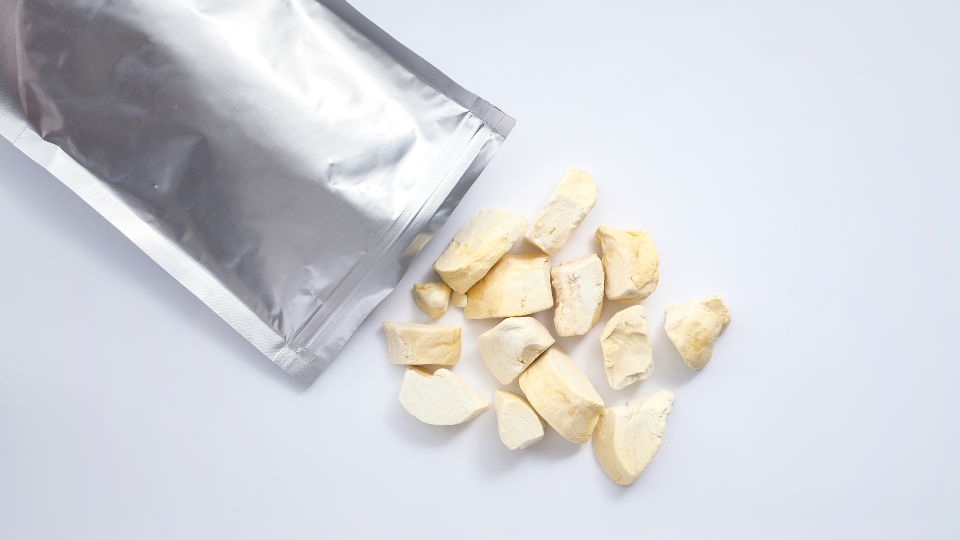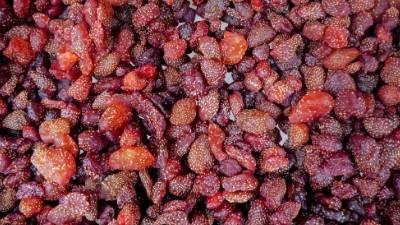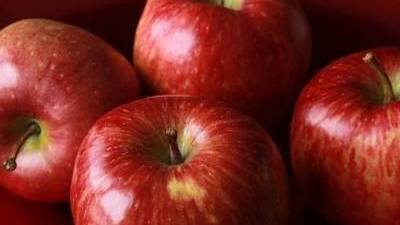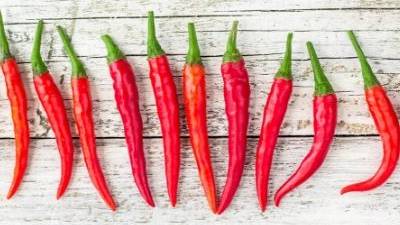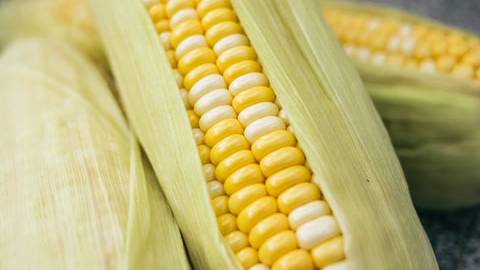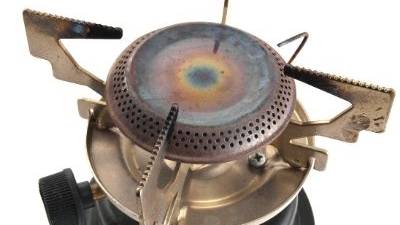How to Preserve Pole and Bush Beans
(Green Beans & Wax Beans)

Did You Know?
- Beans are the second most popular home grown vegetable.
- Beans belong to the legume family along with peas, peanuts, and alfalfa.
- Beans come in both pole and bush varieties and are no longer just green – they can also be yellow and even purple.
Utah Varieties, Planting and Harvesting
There are many good bean varieties for sale in local gardening outlets and through seed catalogs. Most grow well in Utah. Pod shape, size, and color vary among varieties. Here is a list of some potential varieties and plant types that have performed well in Utah.
| Bean Types | Suggested Varieties |
|---|---|
| Bush Beans | Blue Lake, Greencrop, Gold Crop, Kinghorn Wax, Royal Burgundy, Slenderette, Strike, Tendercrop |
| Pole Beans | Blue Lake types, Kentucky Wonder, Romano |
Plant bush beans every 14 to 21 days until mid-July for continuous production throughout the growing season. Bush beans require 50 to 60 days to mature depending on variety. Pole beans generally produce pods over a very long time period so one or two plantings are necessary each year. Bush and pole beans are harvested before the pods are fully mature. Pods should be full size with small seeds, and firm, crisp flesh when picked. Pods are ready for harvest about 7 to 14 days after flowering. Pick regularly as the plant will flower and mature the pods for 2 to 3 weeks on bush varieties and for 5 to 6 weeks on pole types. Harvest and use immediately or refrigerate for best quality and flavor.
Find more information, visit our guide on growing beans.
Selection and Preparation of Green Beans
Choose freshly harvested green beans with young tender pods. Pod diameter, not length, is the best indicator of quality. Freshness is evidenced by a distinct, audible snap when the bean is broken. Beans that are over-matured will be tough and stringy. Immature beans will wilt and soften quickly after harvesting. Wash beans in cold water. Beans can be cut into 1 to 4-inch lengths or left whole.
Freezing
Blanching
Pole or bush beans, like most vegetables, must be blanched before they can be frozen. Blanching stops enzyme actions that can cause loss of flavor, color and texture. Blanching works best if you heat 1 gallon of water to boiling in a large pot fitted with a wire basket, colander, or similar container. Add no more than 1 pound of green beans (4-6 cups) to the boiling water. If the water does not return to a boil within 30 seconds to 1 minute, then there are too many beans. Once the water returns to a boil, blanch beans for 3 minutes (4 minutes at elevations greater than 3500 ft). After 3 minutes, remove the beans using the basket and plunge them into cold wa
Freezing
Fill pint- or quart-size freezer bags close to full. Squeeze out the excess air. Or, pack rigid freezer containers tight, leaving a ½ -1 inch headspace. For all containers: seal, label and freeze. To freeze beans so that they do not stick together, place them in a single layer on a cookie sheet. Cover them with plastic wrap and freeze the beans solid. Once the beans are solid, place them into freezer bags or rigid freezer containers.
Canning
Pole or bush beans and other vegetables are low-acid foods. They do not contain enough acid to safely be canned in a boiling-water canner. Pole or bush beans must be pressure-canned for a safe period of time to avoid the possibility of the foodborne illness botulism.
Use pint or quart jars. Unfortunately there are no safe processes determined for larger size jars. Wash jars in soap and water, then rinse. Prepare lids according to manufacturer’s directions. Harvest, wash, and cut beans as described above. Beans meant for canning do not need to be blanched. An average of 2 pounds of beans is needed per quart jar or 1 pound of beans for a pint jar.
Raw Pack
Fill pint or quart jars tightly with beans leaving 1 inch of headspace. Add boiling water over the beans, again leaving a 1 inch headspace. Attach two-piece metal lids.
Hot Pack
Beans can be boiled for 5 minutes in a pan and then packed hot with the boiling liquid into pint or quart jars. Leave 1 inch headspace and attach two piece metal lids.
For either method you may add canning or pickling salt at ½ teaspoon per pint or 1 teaspoon per quart. Salt may also be omitted completely. To process in a pressure canner, place the jar rack, 2 inches of water, and the sealed jars in the canner. Fasten the lid, and heat the canner on high. After exhausting the steam for 10 minutes, add the weighted gauge or close the petcock to 3 pressurize the canner. Start timing when the desired pressure is reached. Process the jars according to the chart below for your altitude and style of pressure canner.
Recommended process time for Pole or Bush Beans in a dial-gauge pressure canner.
| Recommended process time for Pole or Bush Beans in a dial-gauge pressure canner. | ||||||
|---|---|---|---|---|---|---|
| Canner Pressure (PSI) at Altitudes of | ||||||
| Style of Pack | Jar Size | Process Time | 0-2,000 ft | 2,001 - 4,000 ft | 4,001- 6,000 ft | 6,001-8,000 ft |
| Hot and Raw | Pints | 20 min | 11 lb | 12 lb | 13 lb | 14 lb |
| Quarts | 25 min | 11 lb | 12 lb | 13 lb | 14 lb | |
| Recommended process time for Pole or Bush Beans in a weighted-gauge pressure canner. | ||||||
| Style of Pack | Jar Size | Process Time | 0-1,000 ft | Above 1,001 ft | ||
| Hot and Raw | Pints | 20 min | 10 lb | 15 lb | ||
| Quarts | 25 min | 10 lb | 15 lb | |||
When the processing time has completed, remove the canner from the heat. Air-cool the canner until it is fully depressurized. Then slowly remove the weighted gauge or open the petcock, wait 2 minutes, and unfasten and carefully remove the canner lid. Remove the jars from the canner with a jar lifter and place the jars on a towel or rack. Do not retighten the screw bands. Air-cool the jars 12 to 24 hours. Remove the screw bands and check the lid seals. If the center of the jar lid is indented, wash, dry, label, and store the jar in a clean, cool, dark place.
Pickling
If you wish to can pole or bush beans, but do not have access to a pressure canner, you can pickle beans using the following research-tested recipe available at: Pickled Dilled Beans http://www.uga.edu/nchfp/how/can_06/dilled_beans.html.
Drying
Blanch pole or bush beans as described above. Drain the beans and arrange them in a single layer on a dehydrator tray. Place green beans in the freezer for 30-40 minutes. Place dryer trays into the dehydrator and dry at 140°-145°F for 8-10 hours or until green beans are crisp and brittle. To store dried foods, place the dried food in plastic bags, press out air, seal or close, and then place in glass jars and tightly seal.
Storage
Preserving pole or bush beans that have lost quality will not re-create an acceptable product.
Fresh Beans
Store fresh pole or bush beans in the refrigerator crisper in plastic storage bags or rigid containers to retain moisture. Stored in this manner, beans will maintain quality for 7- 10 days. Beans that are stored below 41ºF may receive chill injuries and get rusty colored spots.
Frozen Beans
Label and date the packages. Properly packaged and frozen, beans should maintain high quality for approximately 10 months.
Canned Beans
If lids are tightly vacuum sealed after processing, remove the screw bands, wash the lid and jar to remove food residue; then rinse and dry jars. Label and date the jars and store them in a clean, cool, dark, dry place. For best quality consume canned beans within 1-2 years. Beans will loose quality and nutrients over time, but will remain safe to eat providing the vacuum seal is intact.
Dried Beans
Pack cooled, dried foods in small amounts in glass jars or in moisture and vapor-proof freezer containers, boxes or bags. Store in a cool, dry, dark place.
Vacuum Packaging
Vacuum packaging can extend the shelf life of either frozen beans or dried beans. Vacuum packaging cannot be used as a food preservation method alone. Follow manufacturer’s directions to vacuum package either frozen or dried beans. Return frozen beans to the freezer. Vacuum packaged and frozen beans will have a longer shelf life than frozen alone (10 months). Vacuum packaged dried beans will resist moisture better.
Nutritional Value
A cup of cooked, fresh snap beans contains only 30 calories, no fat, sodium or cholesterol and is a good source of dietary fiber. It contains 93% water, 2 gm protein, 63 gm calcium, 8 mg iron, 680 IU vitamin A and 15 mg vitamin C.
Recipes
Bacon-wrapped snap beans
Ingredients
Yields 4 portions
- 48 each fresh or quality frozen snap beans
- 8 each 1/2 slices of bacon
- Salt and pepper as needed
Directions
Remove ends from fresh snap beans or use quality frozen beans. Boil beans until they are just tender to eat. Cook bacon slices until they are approximately half done and still flexible. Cut bacon strips in half. Assemble a small bunch of beans (approx. 6 to 8) so that they are parallel to each other. Wrap them in a half strip of bacon. Insert a toothpick into the bacon strip to hold the bundle together. Bake the bundles at 375ºF until the beans just get brown on the edges and the bacon is crisper (approx 6-10 min.). Serve immediately. These bundles can be refrigerated for 1-2 days or frozen for up to one week on a cookie sheet before baking.
Mediterranean-style Bean Salad
Ingredients
Yields 4 portions
- 1 lb fresh green beans
- 1/4 cup extra virgin olive oil
- 1/8 cup red wine vinegar
- 3-4 tablespoons fresh mint leaves, roughly chopped
- 2 fresh garlic cloves, sliced thinly
- 1/2 teaspoon salt
- 1/2 teaspoon pepper
Directions
Boil or steam the trimmed green beans until tender. Drain well. While still warm add the rest of the ingredients and toss the mixture. Allow beans to marinate in the refrigerator overnight. Serve at room temperature.
References
- Complete Guide to Home Canning (Agriculture Information Bulletin No. 539). 1994. USDA & Extension Service.
- Drost, Dan. 2005. Beans in the Garden. Utah State University Extension. Logan, Utah.
Authors
Kathleen Riggs
Related Research














